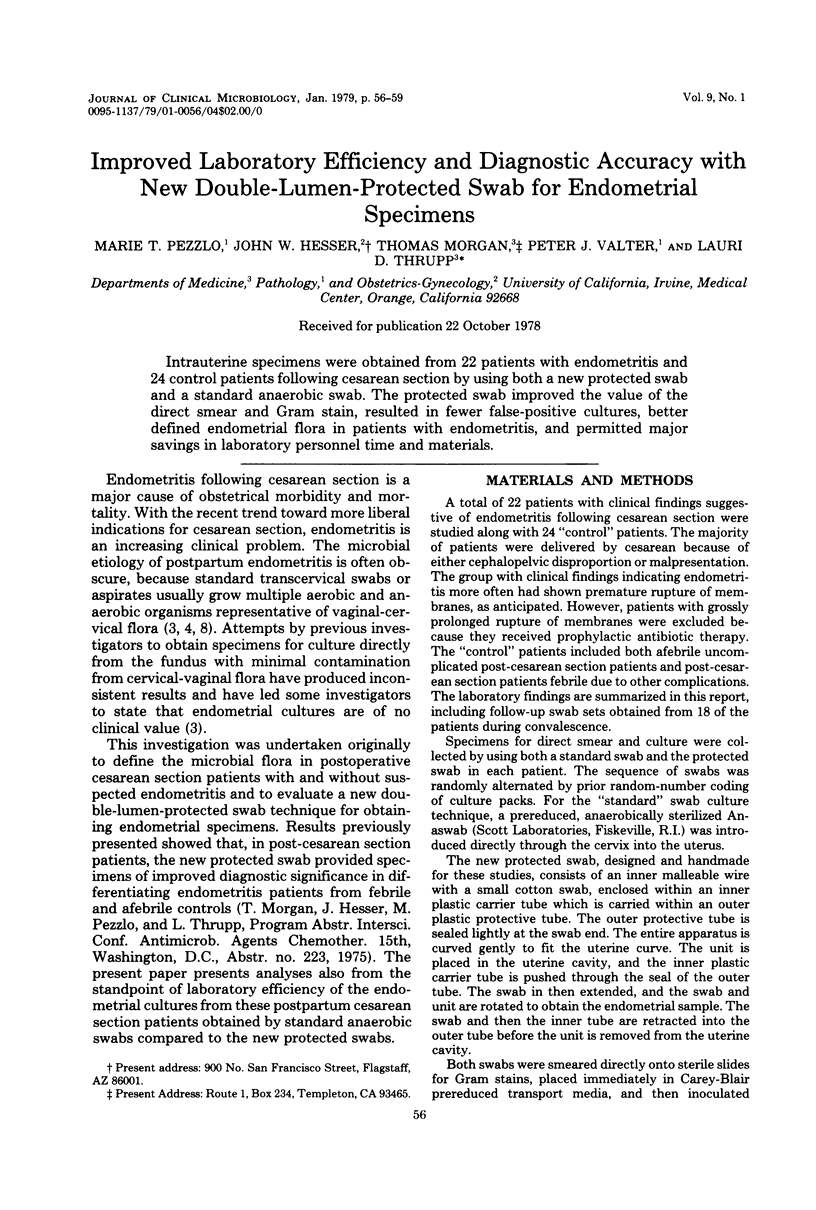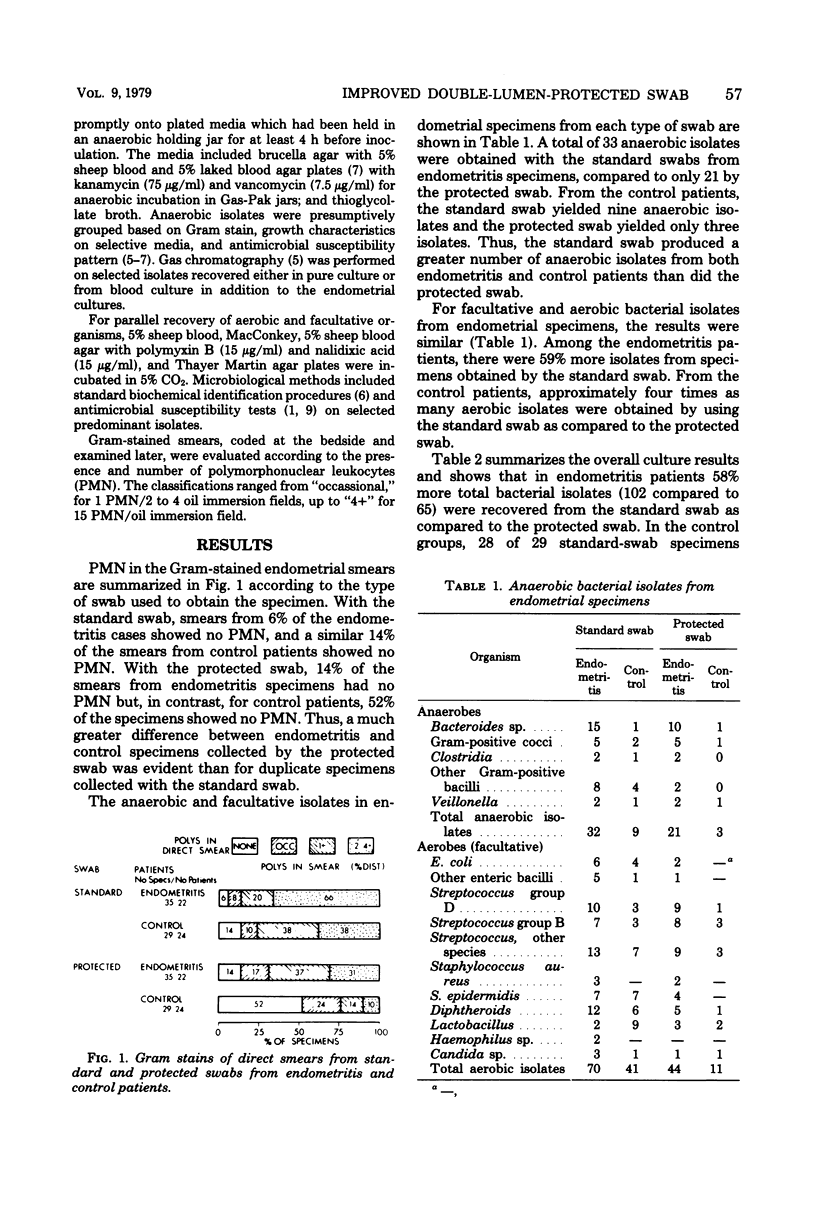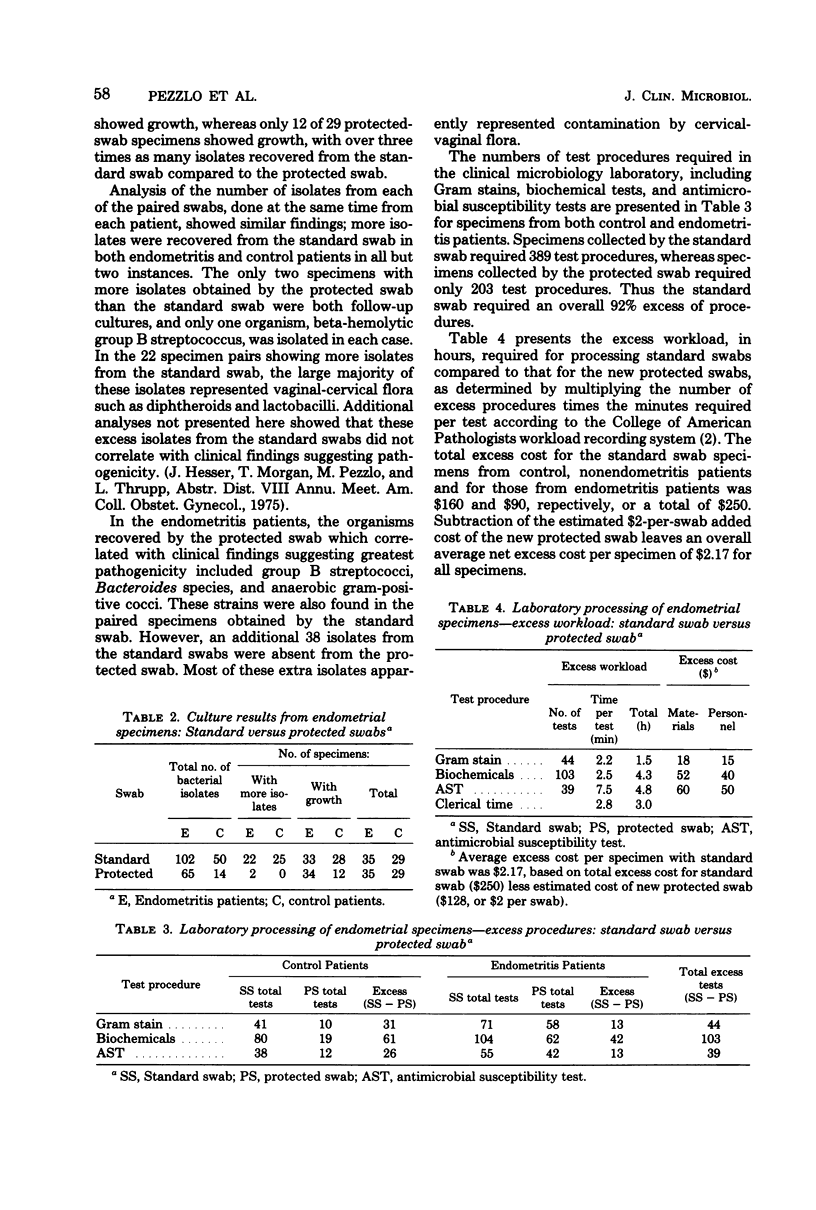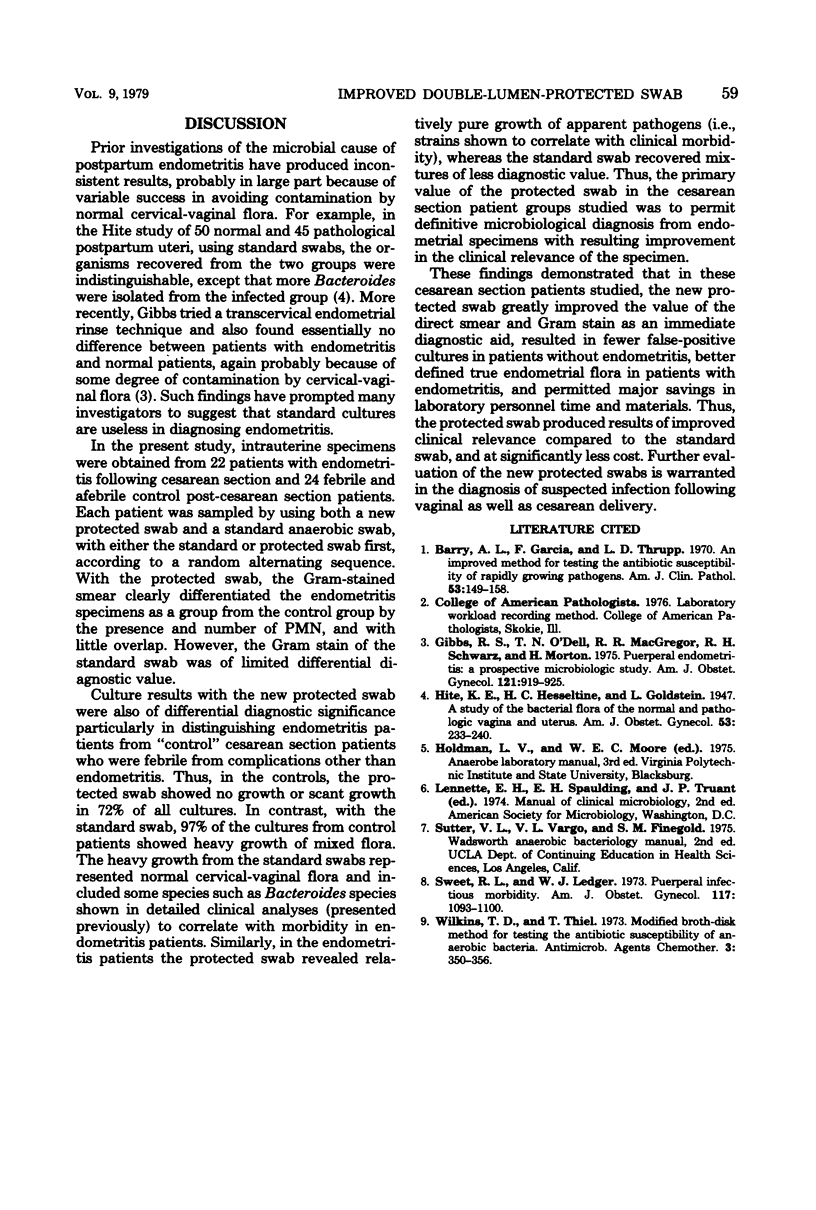Abstract
Intrauterine specimens were obtained from 22 patients with endometritis and 24 control patients following cesarean section by using both a new protected swab and a standard anaerobic swab. The protected swab improved the value of the direct smear and Gram stain, resulted in fewer false-positive cultures, better defined endometrial flora in patients with endometritis, and permitted major savings in laboratory personnel time and materials.
Full text
PDF



Selected References
These references are in PubMed. This may not be the complete list of references from this article.
- Barry A. L., Garcia F., Thrupp L. D. An improved single-disk method for testing the antibiotic susceptibility of rapidly-growing pathogens. Am J Clin Pathol. 1970 Feb;53(2):149–158. doi: 10.1093/ajcp/53.2.149. [DOI] [PubMed] [Google Scholar]
- Gibbs R. S., O'DELL T. N., MacGregor R. R., Schwarz R. H., Morton H. Puerperal endometritis: a prospective microbiologic study. Am J Obstet Gynecol. 1975 Apr 1;121(7):919–925. doi: 10.1016/0002-9378(75)90909-6. [DOI] [PubMed] [Google Scholar]
- Sweet R. L., Ledger W. J. Puerperal infectious morbidity: a two-year review. Am J Obstet Gynecol. 1973 Dec 15;117(8):1093–1100. doi: 10.1016/0002-9378(73)90759-x. [DOI] [PubMed] [Google Scholar]
- Wilkins T. D., Thiel T. Modified broth-disk method for testing the antibiotic susceptibility of anaerobic bacteria. Antimicrob Agents Chemother. 1973 Mar;3(3):350–356. doi: 10.1128/aac.3.3.350. [DOI] [PMC free article] [PubMed] [Google Scholar]


